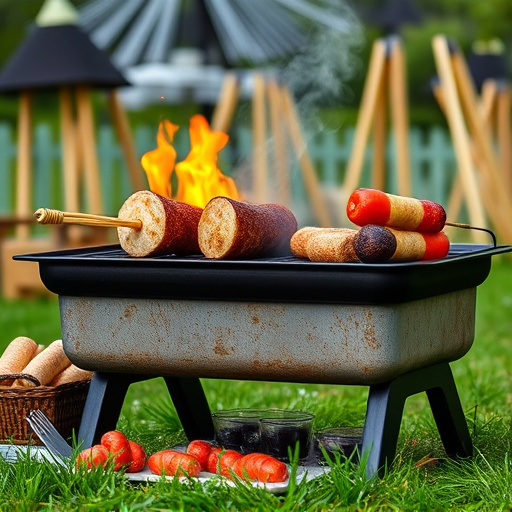Selecting the right cut of bone-in full short ribs with good marbling, brining before slow cooking at low temperatures using a smoker or grill for a minimum of 6-8 hours, and experimenting with wood chips/chunks for unique flavors, are essential steps to create an irresistible BBQ Short Rib Recipe.
“Unleash the ultimate comfort food with our guide to crafting the perfect BBQ Short Rib Recipe. Discover the secret balance of tenderness and smokiness that will have your taste buds dancing. From selecting the ideal cut of short ribs to mastering brining techniques, we’ll walk you through every step. Learn how slow and low cooking methods create fall-off-the-bone results. Get ready to impress with this ultimate BBQ delight!”
- Selecting the Right Short Ribs: Tips for Tenderness
- The Smokiness Factor: Techniques to Achieve a Deep Flavor
- Brining for Moisture and Taste: A Key Step
- Cooking Method: Slow and Low for Fall-Off-the-Bone Results
Selecting the Right Short Ribs: Tips for Tenderness
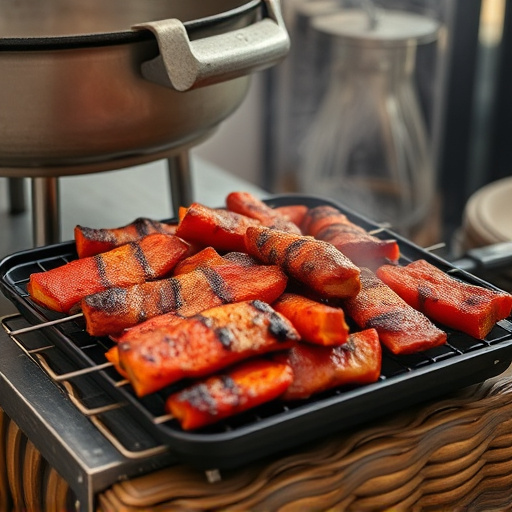
When it comes to achieving the perfect balance of tenderness and smokiness in a BBQ short ribs recipe, selecting the right cut is key. Look for bone-in, full short ribs that include both meat and fat. This combination ensures slow, even cooking and maximum tenderness. The rib eye or cross-cut varieties are excellent choices as they have well-distributed marbling, which keeps the meat moist during the long, low-and-slow cook.
Consider the age of the beef; younger animals (around 18-24 months) tend to have more marbling and will break down more easily under slow cooking methods. You can also choose between grass-fed or grain-fed ribs; while grass-fed may be leaner, both varieties work well for BBQ short ribs recipes, offering distinct flavors that complement the smokiness of your cooking technique.
The Smokiness Factor: Techniques to Achieve a Deep Flavor
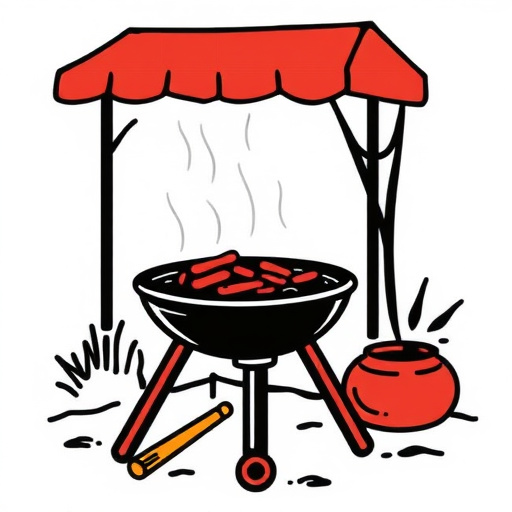
The smokiness in a dish is a delicate balance, and for a mouthwatering BBQ Short Rib Recipe, it’s an art form. Achieving that perfect smoky flavor involves understanding various cooking techniques. One popular method is using a smoker, which allows slow, low-temperature cooking over wood chips or chunks. Different types of wood, like hickory, oak, or mesquite, impart unique flavors, so experiment to find your preferred taste.
Another trick is to sear the ribs first in a hot pan, creating a caramelized exterior that traps juices and enhances the overall flavor. This step, often combined with a dry rub of spices, forms a delicious crust that complements the tender meat. Additionally, slow cooking for an extended period allows the smoky aroma to permeate the ribs, resulting in a savory, mouthwatering dish that showcases the art of BBQ mastery.
Brining for Moisture and Taste: A Key Step
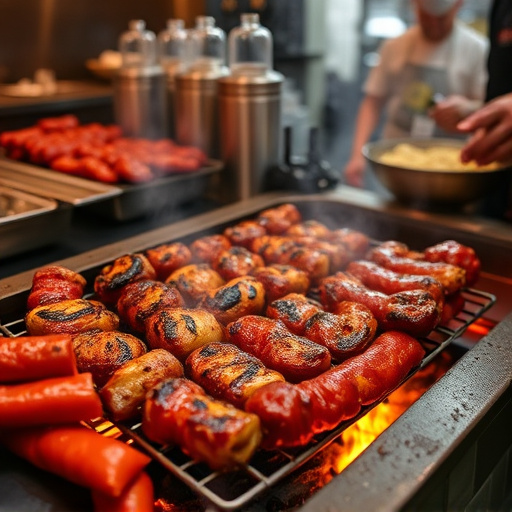
Achieving the perfect balance of tenderness and smokiness in a BBQ Short Rib recipe starts with a key step: brining. Brine is a mixture of salt, sugar, and various spices that not only adds flavor but also helps to keep the meat moist during the slow cooking process. By submerging the short ribs in a brine solution for several hours or even overnight, you’re enhancing both the taste and texture.
The brining process works by drawing out some of the natural juices from the meat, replacing them with the rich brine mixture. This not only prevents the ribs from drying out but also intensifies their flavor profile. When it comes to BBQ Short Ribs, this step is crucial in ensuring that every bite is a symphony of tender, smokied meat and tantalizing spices—a true game-changer for any barbecue enthusiast.
Cooking Method: Slow and Low for Fall-Off-the-Bone Results
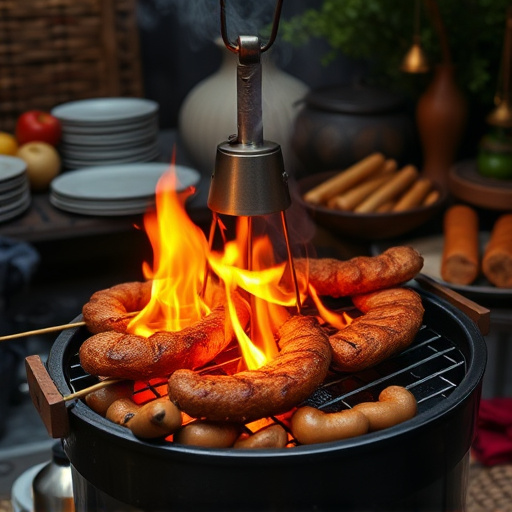
Achieving the perfect balance of tenderness and smokiness in a BBQ short rib recipe starts with one key technique: slow and low cooking. This method allows the meat to break down slowly, resulting in fall-off-the-bone ribs that melt in your mouth. By cooking at low temperatures for an extended period, the collagen in the short ribs rebalances into gelatin, making them incredibly tender.
The smokiness comes from using a smoker or grill with indirect heat, allowing the meat to gently cook while absorbing the rich flavors from the wood chips or pellets. This slow, moist-heat cooking process not only ensures mouthwatering tenderness but also infuses each rib with a subtle smoky aroma that enhances the overall taste profile.
